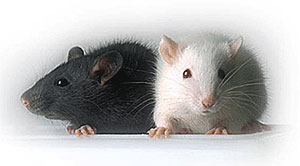|
6. Cited Literature and Links
- Bonifacio E, Atkinson M, Eisenbarth G, Serreze
D, Kay TW, Lee-Chan E, Singh B. 2001. International Workshop on Lessons
From Animal Models for Human Type 1 Diabetes: Identification
of Insulin but Not Glutamic Acid Decarboxylase or IA-2 as Specific Autoantigens
of Humoral Autoimmunity in Nonobese Diabetic Mice.
Diabetes 50(11): 2451-2458.
-
Erfani S, Maldonado TS, Crisera CA, Warren SM,
Lee S, Longaker MT. 2001. An in vitro mouse model of cleft palate: defining
a critical intershelf distance necessary for palatal
clefting. Plastic and Reconstructive Surgery108(2): 403-410.
http://www.plasreconsurg.com
-
Klug, W., Cummings, M. 2000. Concepts of
Genetics, Sixth Edition. Prentice Hall, New Jersey. Novanet: Dal. Lib.
QH430 K574.
-
Martinez-Ruiz R, Montero-Huerta P, Hromi J,
Head CA. 2001. Inhaled nitric oxide improves survival rates during hypoxia
in a sickle cell (SAD) mouse model. Anesthelsiology 94(6): 1113-1118.
http://www.anesthesiology.org
- Wacheck V, Heere-Ress E, Halaschek-Wiener J,
Lucas T, Meyer H, Eichler HG, Jansen B. 2001. Bcl-2 antisense oligonucleotides
chemosensitize human gastric cancer in a SCID mouse
xenotransplantation model. Journal of Molecular Medicine 79(10):
587-593.
-
FUNCTIONAL AND COMPARATIVE GENOMICS FACT SHEET
(http://www.ornl.gov/hgmis/faq/compgen.html). U.S. Department of Energy
Office of Scinece, Office of Biological and Environmental Research, Human
Genome Program, Spons. (Mod. 2001, August 16; Viewed 31 Oct.
2001).
-
MODEL ORGANISMS FOR BIOMEDICAL RESEARCH
(http://www.nih.gov/science/models/). National Institutes of Health, Spons.
(Viewed 31, Oct. 2001).
-
MOUSE
GENOME INFORMATICS(MGD)
(http://www.informatics.jax.org/) The Jackson Laboratory, Spons. (Mod.
2001, November 2; Viewed 3 Nov. 2001).
-
UC CENTER FOR ANIMAL ALTERNATIVES
(http://www.vetmed.ucdavis.edu/Animal_Alternatives/cancer.htm). University
of California Davis School for Veterinary Medicine, Spons. (Mod. 2001, September
27; Viewed November 3, 2001).
Image credits, gratefully acknowledged
- Top photograph of 2 mice:
MODEL ORGANISMS FOR BIOMEDICAL RESEARCH
(http://www.nih.gov/science/models/) .Courtesy Bill Branson, Medical Arts
and Photography Branch, Office of Research Services, National Institutes
of Health, U.S.A.
- Photograph of white mice: Dr. Sylvia Craig, Dalhousie
Unversity
- Background Image:
AAA - Backgrounds - Free Backgrounds
(http://www.aaa-backgrounds.com)
|

